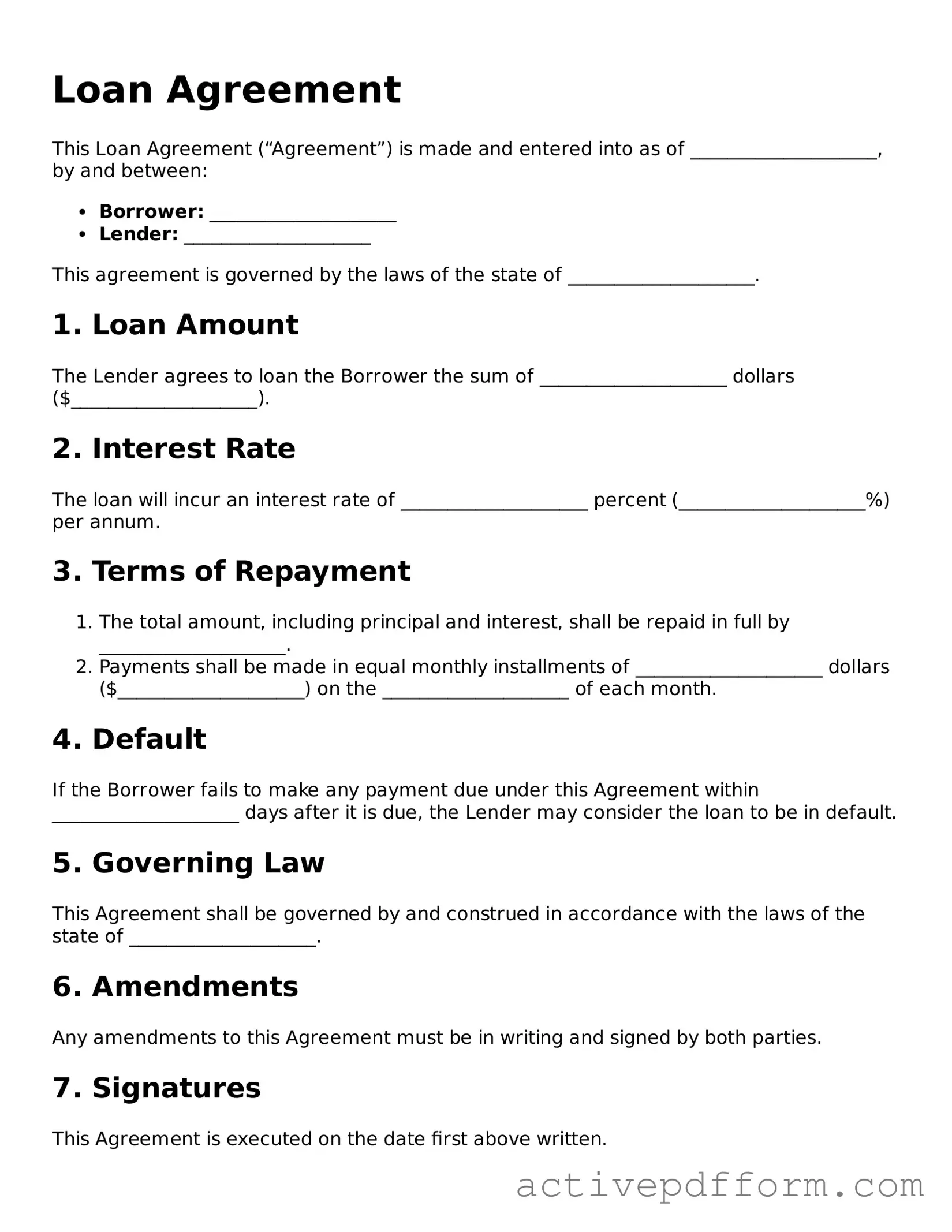Loan Agreement
This Loan Agreement (“Agreement”) is made and entered into as of ____________________, by and between:
- Borrower: ____________________
- Lender: ____________________
This agreement is governed by the laws of the state of ____________________.
1. Loan Amount
The Lender agrees to loan the Borrower the sum of ____________________ dollars ($____________________).
2. Interest Rate
The loan will incur an interest rate of ____________________ percent (____________________%) per annum.
3. Terms of Repayment
- The total amount, including principal and interest, shall be repaid in full by ____________________.
- Payments shall be made in equal monthly installments of ____________________ dollars ($____________________) on the ____________________ of each month.
4. Default
If the Borrower fails to make any payment due under this Agreement within ____________________ days after it is due, the Lender may consider the loan to be in default.
5. Governing Law
This Agreement shall be governed by and construed in accordance with the laws of the state of ____________________.
6. Amendments
Any amendments to this Agreement must be in writing and signed by both parties.
7. Signatures
This Agreement is executed on the date first above written.
- Borrower Signature: ____________________________ Date: ____________________________
- Lender Signature: ____________________________ Date: ____________________________
